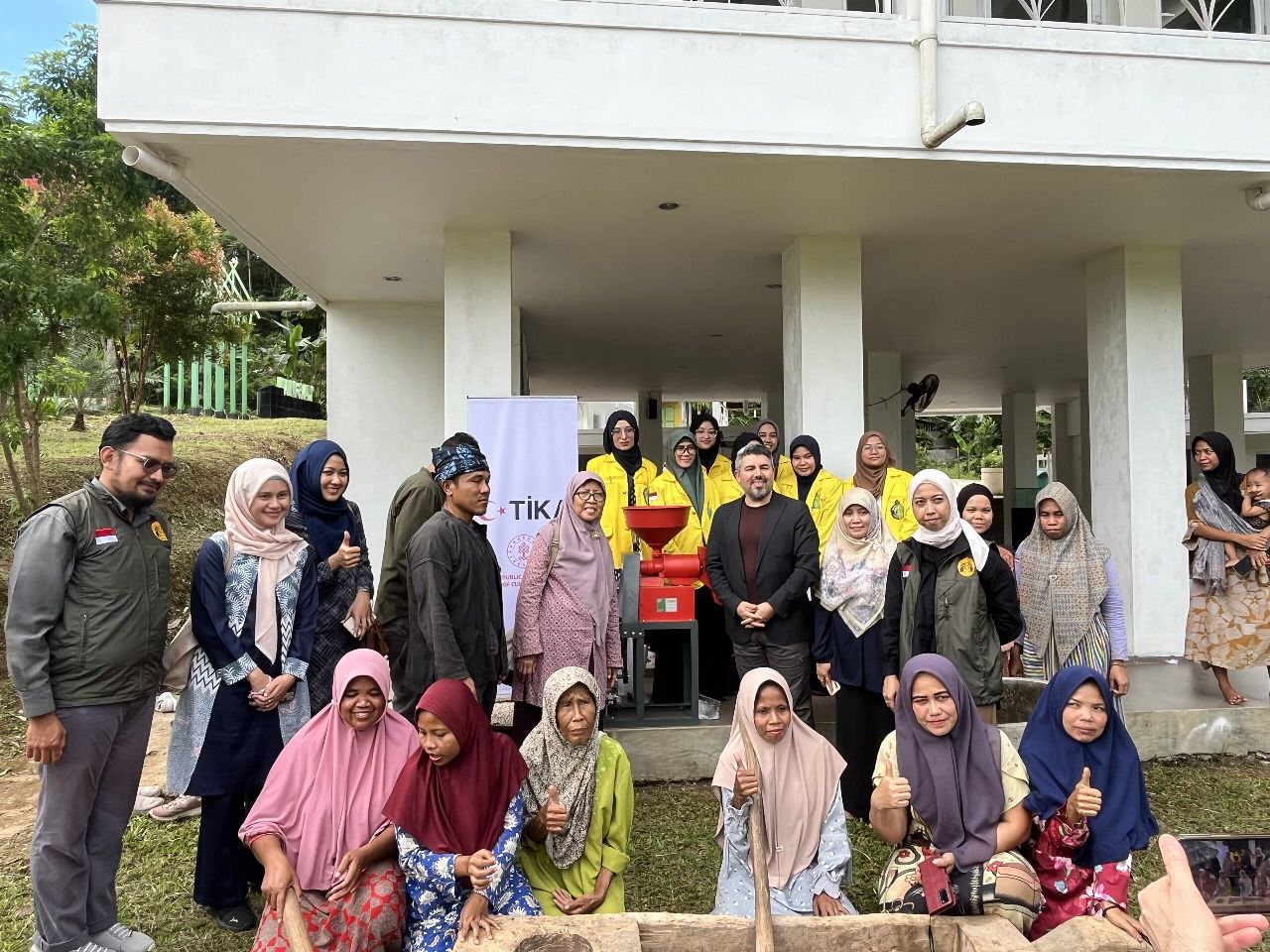Depok, August 9th 2023. This morning (Wednesday, 9/8), Universitas Indonesia (UI) inaugurated Prof. DRa. Kiki Ariyanti Sugeng, M.Sc., Ph.D., as Professor in the Field of Graph Science and Combinatorics, Faculty of Mathematics and Natural Sciences (FMIPA) UI. The inauguration ceremony was led directly by the Rectorr of UI, Prof. Ari Kuncoro, S.E., M.A., Ph.D., and was broadcasted virtually via the Universitas Indonesia YouTube channel and UI Teve. In the procession, Prof. Kiki presented her scientific oration entitled “Graph Labeling, Pattern Diversity in Mathematics”.
She conveyed that the key to technology in the 20th century was closely related to the collection, processing and distribution of information. In the 21st century life, known as the current era of society 5.0, humans are very dependent on communication networks. All processes of progress in information technology are strongly supported by mathematics. On the other hand, digitization of processes in both business and education as well as other things in organizations has been widely implemented in the era of society 5.0. Therefore, it is necessary to pay attention to the security of digital documents in storage and in delivery. One of the data security algorithms that uses mathematical concepts is the RSA Algorithm (Rivest, Shamir, Addleman).
She further said, the sender chose two pairs of prime numbers and a large enough number, and used the two prime numbers to become a single number. The process of multiplying and becoming, would be very easy, but factoring into is still a very difficult thing and has not been solved until now. Based on this simple mathematical concept, RSA cryptography has proven to be very secure, since it was discovered in 1977 and still works today.
In developing mathematics, Prof. Kiki said that classification would usually be carried out, namely theoretical mathematics and applied mathematics. In general, applied mathematics is developed based on real-life problems that need to be solved, thus the application is already known. Meanwhile, mathematical theory emerged because of the desire to know the structure and properties of various objects in mathematics.
To put it simply, studying mathematics is observing patterns, hence why mathematics is also sometimes referred to as the science of patterns. From the patterns obtained, it can be abstracted into mathematical concepts.
Simple diagrams now called graphs, or networks to researchers in computer science and engineering, can model a variety of everyday events. The simplest representation is a graph showing a road map, where dots represent cities, and arcs (lines in the diagram) represent roads connecting the two cities.
“From now on, points will be called vertices and lines will be called arcs. Graphs can be applied to various fields. One thing that is inherent in our daily lives is the use of Google Maps, which works based on searching for the shortest path in a graph,” said Prof. Kiki.
She added, one of the areas of research in graph theory is graph labeling. Graph labeling is the labeling of graph elements which can be vertices, edges, and faces, or maybe a combination thereof, of a graph. The labels given are usually integers, although there are also labels that use rational number labels.
If the label can represent a color, then the problem is called graph coloring. A very interesting thing in labeling research is that adding or subtracting a few nodes or arcs often gives very different patterns.
Sensitivity in seeing patterns that are emphasized in studying mathematics, is expected to make all parties able to see more clearly the problems they face. Mathematics, including graph labeling, not only teaches things that have been found in the past, but can also invite students and students to find new patterns or things that have never been found before. This is the essence of research, which can scale from simple to more complex levels.
“As I explained at the beginning, new concepts can start from simple things. It depends on us whether these discoveries or simple thoughts and questions can be developed. Therefore, mathematics teaching and love of mathematics need to be strengthened. This responsibility is also a shared responsibility, including those of us who are lecturers at universities,” said Prof. Kiki.
During the inauguration, the Chairman of the UI Board of Trustees, Dr. (HC) Noni Purnomo, B.Eng., MBA.; Sinarmas Managing Director / Chairman of the UI Board of Trustees Period 2019 – 2023 Saleh Husin, S.E., M.Si.; Founder of the Indonesian World Record Museum (MURI) and Jaya Suprana School of Performing Arts Prof. HC. Jaya Suprana; and Chair of the Andalas University Academic Senate Prof. Dr. Syafrizal Sy.
Prof. Kiki completed a Bachelor’s degree in Mathematics at UI in 1985 and in 1987 she succeeded in obtaining a Master’s degree in Mathematics at the Bandung Institute of Technology. Then Prof. Kiki completed her doctoral education at the University of Ballarat (Federal Univ), Australia in 2006. Some of her scientific works are entitled, Modular Irregularity Strength on Some Flower Graphs (2023); Two Types Irregular Labeling on Dodecahedral Modified Generalization Graph (2023); Distance-Local Rainbow Connection Number (2022); and Uncertain Hypergraphs: A Conceptual Framework and Some Topological Characteristics Indexes (2022).



